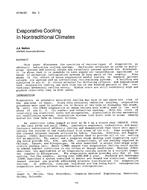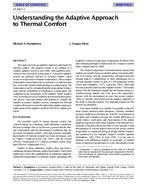Click here to purchase
Leaking water pipes or floods have become an increasing problem for building owners and insurers because their frequency and restoration costs are rising. To avoid moisture problems, such as mold growth, the drying process should be fast and effective, usually necessitating special drying devices. These devices either heat the wall, e.g. by infrared panels, or lower the humidity of the ambient air by adsorption or condensation drying systems. Both methods consume a lot of energy. To reduce energy consumption without compromising the drying efficiency, a novel drying system has been developed and tested that keeps the applied heat in the wall and lets the moisture out by vapor diffusion. This system consists of a panel with temperature controlled heating wires covered by a diffusion-open insulation and a ventilation system. To dry a wet wall, the panel is applied with the heated side to the wall. Moisture evaporated from the wall penetrates the insulation layer by diffusion and the vapor is discharged through the ventilated backside of the panel. Compared to conventional wall drying devices, the energy savings by employing the new drying system exceeds 80% at the same drying rate. This is mainly achieved by the vapor permeable insulation layer that effectively reduces the heat flux from the wall into the ambient air.
Citation: Thermal Buildings XIV 2019
Product Details
- Published:
- 2019
- Number of Pages:
- 8
- Units of Measure:
- Dual
- File Size:
- 1 file , 2.2 MB
- Product Code(s):
- D-Bldgs19-074


